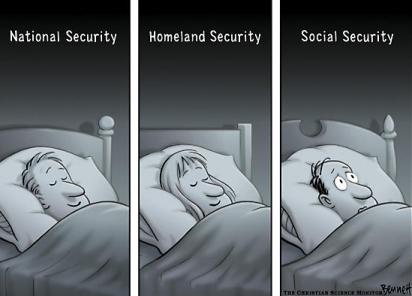The Future of Social Security
8/5/2016

In 1950, America boasted roughly 16 working adults for each retiree. The large pool of workers contributing to social security and the relatively low number of retirees receiving payments combined for an effective way to fund a stable source of supplemental income for retirees.
Shrinking Labor Force
However, since then, the ratio of workers to retirees has plummeted to just 3-to-1 in 2010. Projections indicate that, given the number of Baby Boomers who are nearing retirement, this ratio will shrink to just 2-to-1 in the next 10 years. With birth rates at their lowest in the past century, the number of workers entering the workforce is simply not keeping up with those that are retiring.
Due to the declining ratio of workers to retirees and the subsequent decrease in the amount generated by taxes, the Social Security Administration will soon start paying out more than it generates. If the rate at which workers pay into social security stays the same, the fund be depleted in approximately 20 years.
Contrary to what some may fear, if the fund runs out there will not be a complete cessation of payments to retirees. Though there would be no surplus to draw from once the fund starts to pay out more than it generates, regular revenue for social security from taxes would still supply retirees with a retirement benefit. However, the lack of surplus would result in these benefits being reduced by 20-25 percent per year.
Vital to Retirement
According to a 2014 survey from the U.S. Census Bureau, roughly 40 percent of retirees would fall below the poverty line if not for social security. Additionally, the Social Security Administration reported in 2014 that 20 percent of retirees aged 65 or older rely on social security payments for all of their retirement income. Given that social security is absolutely vital to many Americans, there is urgency about what steps will be taken to accommodate for the current, and projected, seismic shift in active workers.
Different groups have called for an immediate reduction in benefits to postpone depleting the fund, higher taxation on workers or some combination of the two. Realistically, policy will most likely be focused on reducing the amount of increase for delaying benefit election. Current Social Security legislation gives retirees an 8% raise for each year that they defer. Couple that with a longer life expectancy, and outflows become unsustainable.
A Widespread Problem
Given the uncertainty of how significant social security payouts will be in the next few decades, self-directed retirement funds will play a more crucial role in retirement. Currently, Americans are generally underprepared for the projected reduction of social security benefits. Recent studies show that savings to retirement accounts by adults are dismal. According to a 2016 survey from GOBankingRates.com, 1-in-3 adults have no retirement savings whatsoever, while nearly 3-in-5 have less than $10,000 saved.
Some might assume that the reason for low savings is that many young working adults simply have not had the time to contribute to their qualified accounts and let the balances grow. However, the truth is that the majority of adults over 40 years old are behind on their retirement savings, too. The cycle of deferring current savings and hoping to catch up later has left many unable to retire. Over the past few years, approximately 25 percent of Americans have had to delay their retirement by at least one year.
News of the Social Security fund being depleted has led to panic about how Americans will fund retirement. The silver lining is that as long as social security taxes are in place, there will be government assistance in retirement—it’s just a matter of how much the payments will be.
Given the projected reduction in benefits, Americans must be careful not to overestimate how much they will be getting from social security. Now, more than ever, Americans need to remember that social security is not meant to fund their entire retirement; it is meant to offer a layer of support. By preparing their personal savings for lower social security payments, Americans can ensure that they are ready for retirement on their own terms.






